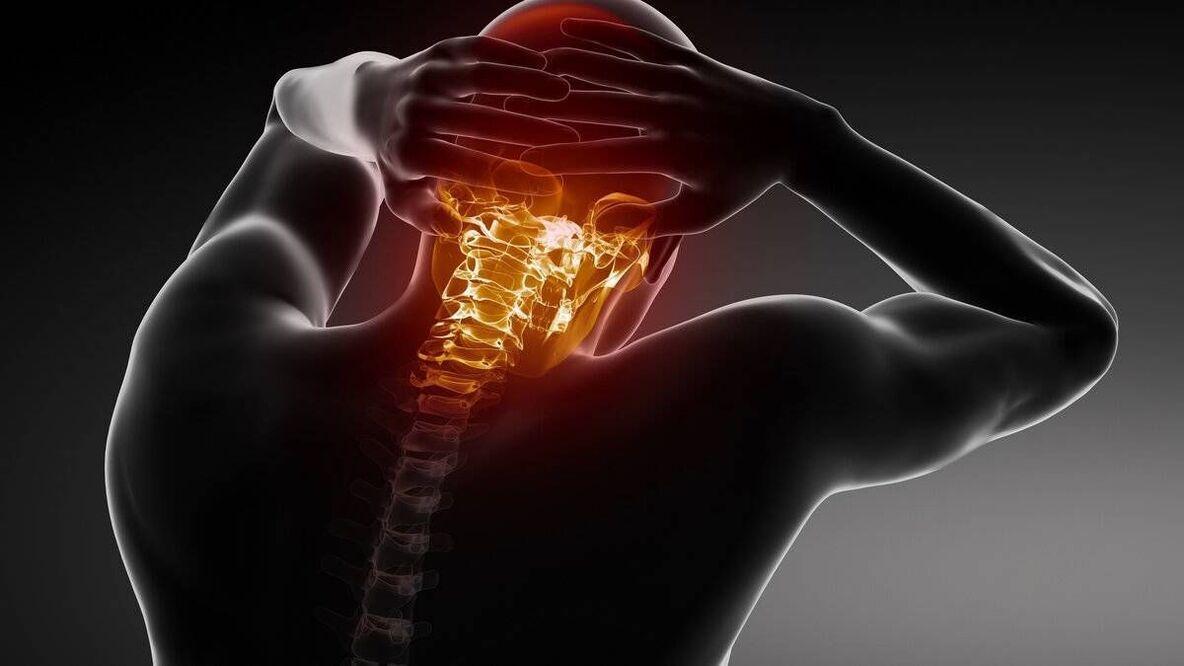
Cervical Osteochondrosis - Stages
Istage
twostage
three,stage
No. 4stage
Cervical Osteochondrosis - Symptoms
- hoarse, hoarse voice;
- Partial damage or worsening of the tooth's condition (a person is visiting the dentist more frequently than usual);
- loss of vision;
- Burning between shoulder blades ;
- Throat pain (symptoms similar to those of a sore throat);
- Arm weakness;
- Pain in shoulders, back of head, arms;
- Impaired motor coordination (curved gait);
- Dizziness, which may lead to fainting;
- rapid fatigue;
- Feeling weak immediately after waking up;
- Snoring (not all cases);
- Hearing loss, tinnitus;
- Headaches that occur daily or frequently;
- Drawing pain in the left side of the chest, radiating to the arm;
- Limited neck movement, creaking when turning/tilting.
Cervicosternal Osteochondrosis - Symptoms
- Migraine;
- Dizziness;
- Tongue and face become numb;
- weak;
- White spots appear before eyes;
- nausea;
- Soreness in the heart muscle area;
- Fingers become numb, tingling, or stiff;
- pressure fluctuations;
- Shoulder girdle pain;
- Worsening of muscle fiber tone;
- Dental problems.
What are the dangers of cervical osteochondrosis?
- cervical radiculopathy;
- cervical hernia;
- Neck and cranial pain;
- Herniation of the neck (herniation);
- Vertebral artery difficulty, cervical osteophytes, paresis, etc. ;
- Neck and arm pain.
Treatment of cervical osteochondrosis
Drug treatment of osteochondrosis
gel/ointment
- This list includes warming agents.
- Compositions that accelerate cartilage tissue recovery would also be beneficial.
- Relieve inflammation and reduce pain.
muscle relaxants
repair
multi-vitamins
cartilage protector
Folk remedies for treating cervical osteochondrosis

potatoes with honey
paraffin
turpentine dough
Herbal series
important!
Self-massage for cervical osteochondrosis
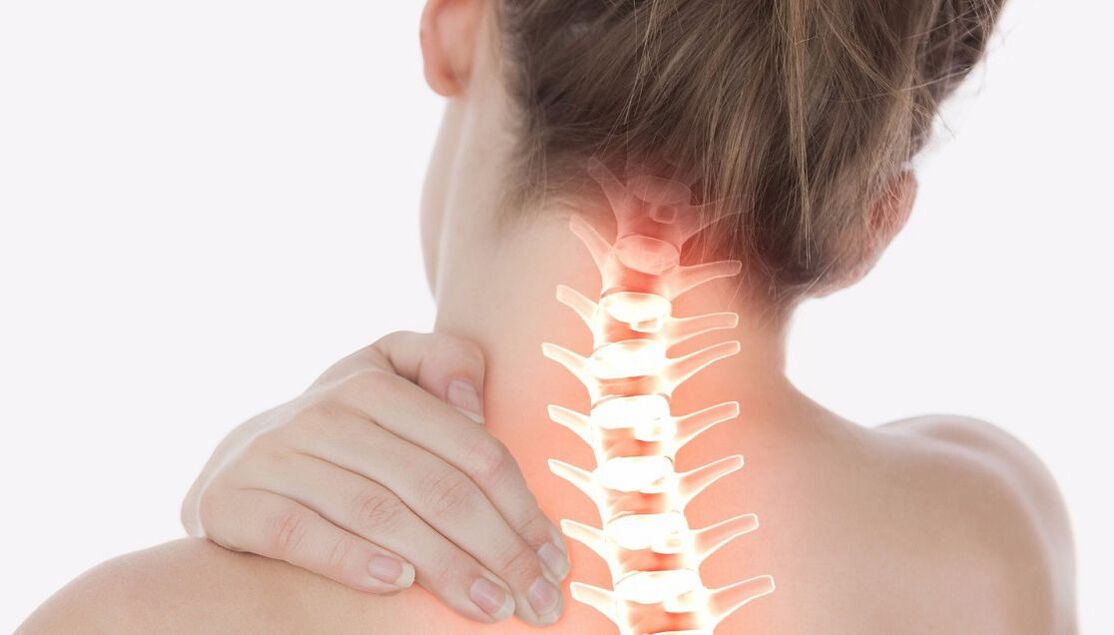
rule:
- Finger movements should be made from the center of the spine toward the edge;
- Perform this procedure using your fingertips only;
- It is forbidden to press the inflamed area with force;
- Forget the sharp pressure and rush, everything goes smoothly;
- Treats the muscles in the back of the head, back and sides of the neck.
important!
technology:
- Only perform this procedure while sitting;
- Cross your legs and rest your elbows to reach the back of your neck and spine;
- Wrap the fingers of your other hand around your neck from all directions;
- Stroke and knead the lateral and posterior muscles;
- End with caressing;
- Duration – 10 minutes, frequency – daily.
Exercise methods for cervical osteochondrosis
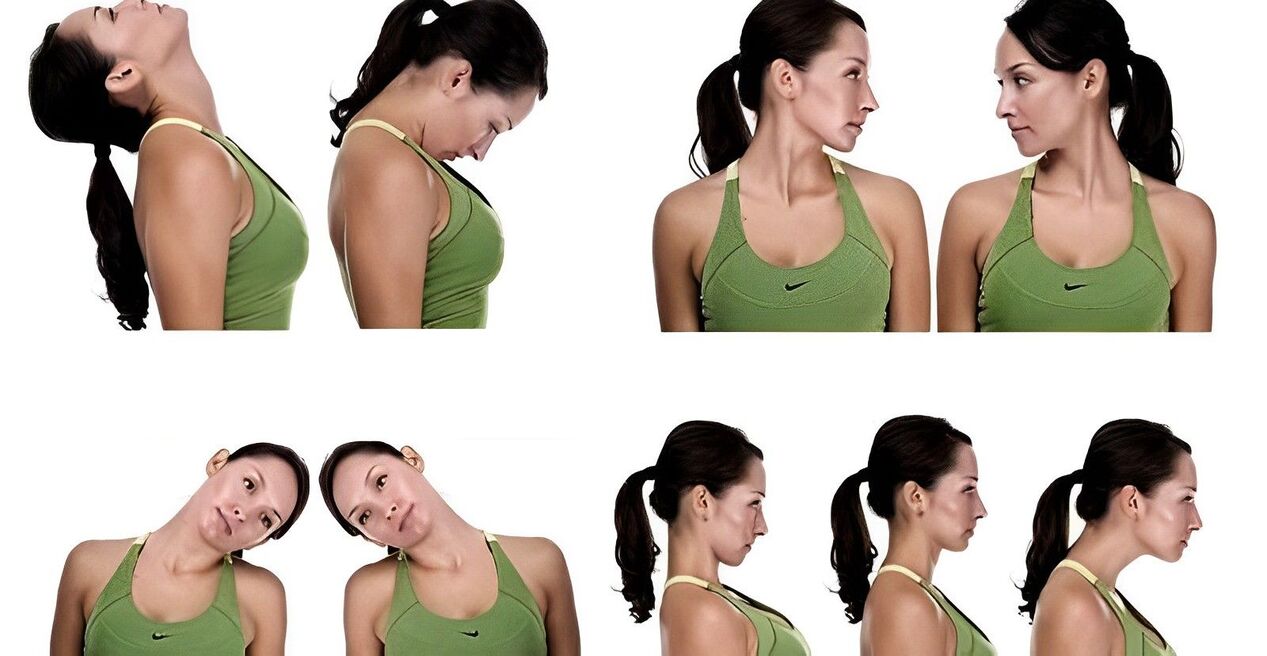
number 1
number 2
third place
No 4
Number 5
number 6
Number 7
important!
Home treatment effects for cervical osteochondrosis
- Reduces pressure on vertebrae;
- Blood flow to the problem area returns to normal;
- Pain symptoms disappear;
- Increased tissue metabolism;
- Neck spasm disappears;
- Degeneration of bone and cartilage is reduced.
Osteochondrosis of the cervical spine, symptoms, medical treatments and folk methods, exercises at home
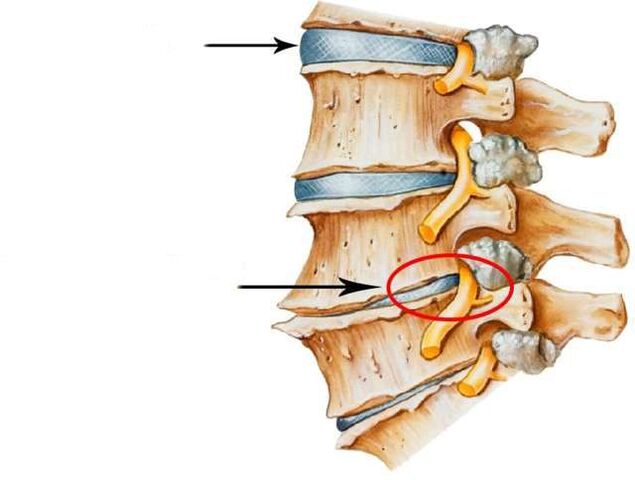
- Occupational characteristics that require the body to be fixed in a certain position for a long time: assembly line workers, vehicle drivers, painters;
- Sedentary lifestyle, lack of physical activity, sedentary jobs;
- The body is fixed in certain postures for a long time: incorrect posture when sitting at the table, incorrect posture when sleeping;
- Excessive physical activity by athletes, dancers, acrobats, and loaders;
- The body is often poisoned, which also has a damaging effect on the intervertebral discs. These include frequent colds, bad habits;
- flatfoot;
- Back injuries lead to disruption of the integrity of the intervertebral discs.
symptom
- painful feelingSymptoms include pain in the upper back, neck and back of the head. The pain can be obvious and localized, or it can radiate to the arm. Depending on which vertebra the disc is damaged, radiating (spreading) pain may occur to the left or right arm - the forearm area and along the entire length of the arm down to the fingertips. Pain can be constant or occur occasionally under the influence of certain factors, mainly exercise.
- Movement disorders. After suffering from osteochondrosis for a long time, people will form movement stereotypes, leading to the formation of movement disorders. For example, if pain occurs when turning the head to the left, then the patient will try to turn the head to the left as little as possible, which is a mistake. Over time, turning your neck to the left becomes as impossible as bending your knees in the opposite direction. Other symptoms include numbness in the fingers, hands and sides of the forearms.
- vegetative vascular manifestationsOsteochondrosis is a spasm of blood vessels and even carotid arteries that are compressed by the vertebrae, causing migraines and dizziness. "Floaters" appear in the eyes, and there is noise or congestion in the ears. Weakness, depressed mood, weakness, lethargy, and chronic fatigue may be observed from the central nervous system. If vertebral artery syndrome is evident in cervical osteochondrosis, it is accompanied by elevated blood pressure and headaches, which are often severe.
medical treatement
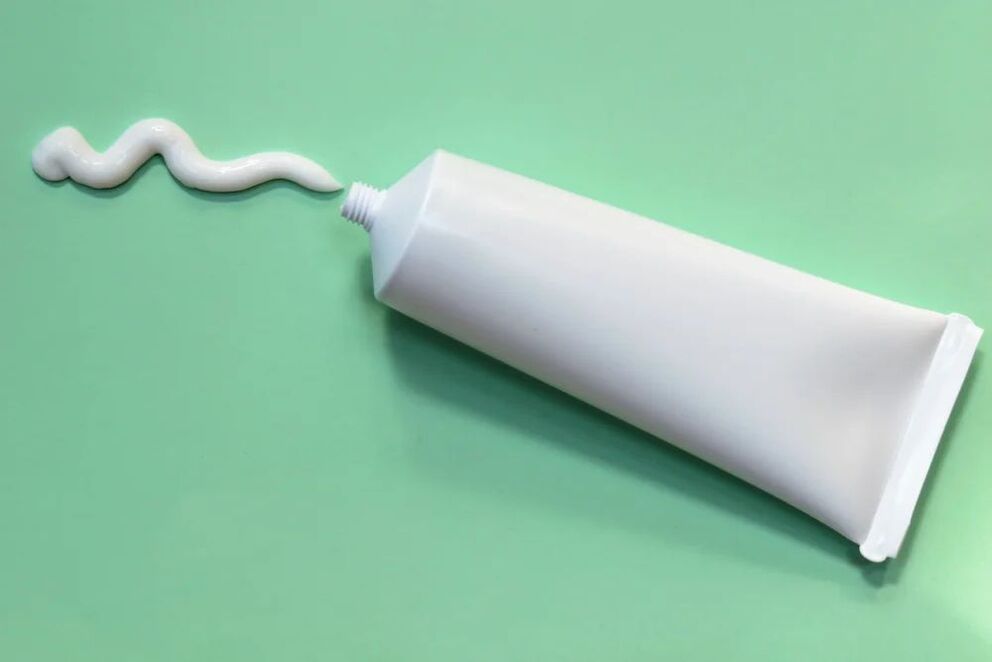
physiotherapy
- We recommend that you read the material at the following links:
- — Bubnovsky – Healing the Spine and Joints Video Gymnastics
- Sergei Mikhailovich Bubnovsky is the developer of a unique health-promoting gymnastics that today helps many people.
Nutrition for osteochondrosis

- Sweet,
- flour and limit the consumption of grains,
- Salt and spices.
Take 10-15 drops with water in the morning. Within a month or two. You can repeat this course twice per year. The same five-leaf tincture can also be applied to painful neck areas.
massage
- The masseuse then places the right palm on the spine and applies gentle pressure with the left palm from above, carefully sliding it along the spine from the base of the skull to the tailbone.
- The final stage of the massage involves rubbing the skin on the back with special ingredients.
- In the past, the Pomor people, residents of the Arkhangelsk region, used vegetable oil (cheese pressing, cold pressing) and sea salt, taken in equal parts by volume.
- Stir the ingredients regularly for three days and store the mixture at room temperature. On the third day, the composition is ready for use. When buying sea salt, it's important to pay attention to the ingredients: it should not contain dyes, fragrances, or other additives.
Therefore, the course will last for two weeks. As a result, the condition of the blood vessels in the back and tissues near the spine will improve.






















